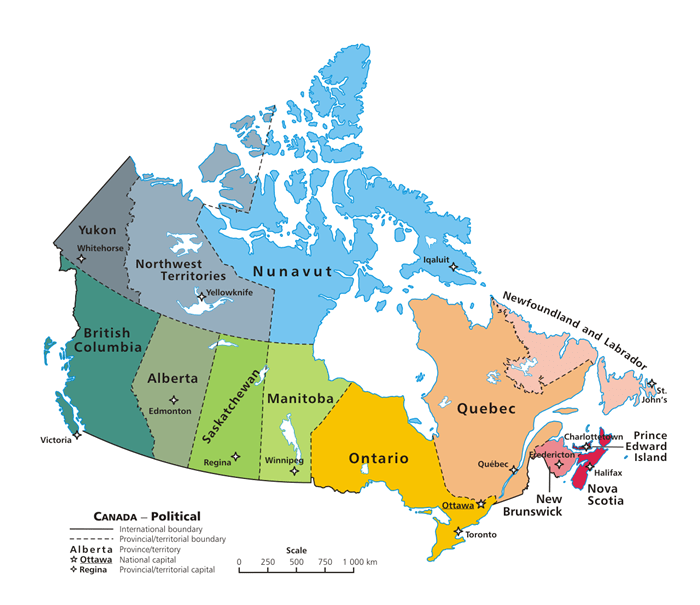Aviation in Canada: An Assessment Based on Flight Distances
Aviation plays a vital role in Canada’s transportation infrastructure, connecting the vast expanse of this beautiful country. With its diverse geography and expansive airspace, Canada presents unique challenges and opportunities for the aviation industry. In this article, we will explore the significance of flight distances in Canadian aviation and how it impacts various aspects of the industry.
Geographic Factors Shaping Canadian Aviation:
Canada’s vast territory encompasses diverse landscapes, ranging from mountains to forests, prairies to coastal regions. This geographic diversity necessitates efficient air travel to connect remote communities, support economic growth, and facilitate tourism. Flight distances play a crucial role in determining the feasibility and economic viability of air routes across the country.
Connecting Remote Communities:
One of the most significant advantages of aviation in Canada is its ability to connect remote communities. Due to the vast distances between towns and cities, air travel provides a lifeline for many Canadians living in isolated regions. Flights enable timely access to medical services, educational opportunities, and essential supplies. Airlines often operate smaller aircraft, such as turboprops, to efficiently serve these remote areas.

source: E Pluribus Anthony at the Wikipedia project
Economic Implications:
The assessment of flight distances is essential for airlines when determining profitability and operational efficiency. Long-haul flights, such as transcontinental routes, require larger aircraft capable of carrying more passengers and cargo. These routes often have higher demand and offer greater revenue potential. On the other hand, shorter regional flights may require smaller aircraft or regional airlines specializing in connecting smaller communities.
Environmental Considerations:
With increasing global concerns about carbon emissions and sustainability, flight distances play a role in evaluating the environmental impact of aviation. Longer flights consume more fuel, resulting in higher emissions. Airlines in Canada have been actively exploring strategies to reduce their carbon footprint, including investing in more fuel-efficient aircraft, implementing sustainable practices, and exploring alternative fuels.
Air Traffic Control and Navigation:
Managing air traffic across vast distances is a complex task that requires advanced air traffic control systems. The assessment of flight distances helps in designing efficient air routes, optimizing airspace utilization, and ensuring the safety and smooth flow of air traffic. Navigation aids, such as ground-based radio beacons and satellite-based systems, enable pilots to navigate accurately, especially in areas with limited ground infrastructure.
Impact on Airports:
Flight distances impact the demand for air travel, which, in turn, affects airport infrastructure and operations. Major airports located in major cities like Toronto, Vancouver, and Montreal handle both domestic and international flights, serving as important hubs for connecting passengers. Regional airports focus on shorter flights, serving local communities and providing access to smaller cities and towns.
Conclusion:
In Canada, flight distances are a crucial factor in assessing and shaping the aviation industry. They influence the connectivity of remote communities, impact the profitability of airlines, drive environmental considerations, and determine air traffic control strategies. The evaluation of flight distances allows stakeholders to make informed decisions about route planning, aircraft selection, and infrastructure development. As Canada’s aviation industry continues to evolve, understanding and adapting to the challenges and opportunities presented by flight distances will be key to its success.
References:
- Transport Canada. (2021). Aviation Safety in Canada. Retrieved from [https://tc.canada.ca/en/aviation/aviation-safety-canada]
- The Conference Board of Canada. (2021). Canadian Industrial Outlook: Spring 2021. Retrieved from [https://www.conferenceboard.ca/e-library/abstract.aspx?did=11247]
- Government of Canada. (2022). The 2030 Green Transportation Plan. Retrieved from [https://www.canada.ca/en/environment-climate-change/services/transportation/fuel-efficient-vehicles/green-transportation-plan.html]
- NAV CANADA. (2021). Navigation Services. Retrieved from [https://www.navcanada.ca/en/]
- Airport Council International. (2021). Canadian Airports Council. Retrieved from [https://www.aci.aero/About-ACI/ACI-Network/ACI-Regions/North-America/Canada]


